| Let's go to the little child and ask him to describe the tomato What will we hear in response? A small child will conduct a series of visual and tactile experiments on a tomato and tell us - that this is something 1)Red 2)Round 3)Soft 4)Unleavened 5 )No t very large in size And this way the tomato will remain in the child's mind. If you approach a little more formally, the child remembers the pair: the property and its meaning. And not just value. ie In the mind of the child there is a logical chain: the object - its properties - the values of the properties And it is this model of information storage that uses Pangeya technology - this one is the simplest model, understandable even for a 5-year-old child! Nothing is easier! In Pangeya system you can create objects, create properties (or use ready-made properties) and describe any, I want to emphasize - ANY information in the world. ie You can assign different objects with different values of different properties. When a child grows up - he learns that tomatoes come in different shapes, sizes and colors, but these changes will not be very different from the original specimen. And the idea of a tomato from the point of view of its properties in the child's mind becomes more complicated, but he will still think of the tomato as something endowed with properties and nothing else. Perhaps this child will grow up and become a physicist or geneticist. And then he will be able to study individual tomato cells, individual tomato atoms. He learns a lot more about the tomato, but still can imagine it in his head through a set of tomato properties. To comprehend a tomato to the end is impossible, as well as any object in the world. But we can describe it in more and more detail. As a result, analysis of the tomato leads us to a whole series of conclusions: 1.Everything in the world can be described as something endowed with properties 2.Such a description will never be final, but can be arbitrarily refined 3.This is how the idea of the surrounding world is stored in the person's head 4.If some intellect has incomplete representation about something - this does not mean that it does not have any representation about it at all For example, it is known that dogs see the world as black and white, ie they can not know the truth about the true color of the tomato. But about many other of its properties, the dog can have a perfectly correct idea. When creating artificial intelligence, it should be understood that even if he learns to distinguish objects of the surrounding world by at least one property (for example, by color or form), then he will already be an intellect. And the wider the representation of the object, the more developed this artificial mind will be. Therefore, turning to the question of how to store the knowledge accumulated by the artificial brain - the answer is simple - in the form of objects with properties. I deliberately emphasize the way knowledge is stored and I do not yet take into account the way knowledge is acquired by artificial intelligence. This will be a separate study. The idea of storing information in the form of objects with properties is old as the world, it is obvious, it is natural and already widely used literally everywhere. Even in programming languages, the OOP concept (object-oriented programming) is the basis for writing large programs. And, it would seem, why talk about obvious things and write about it again? Because, as often happens, everyone understands something - but they do not realize and do not see what fantastic consequences can be obtained from this! People have watched the birds hovering in the air for centuries, but only a century ago they made the plane. People in ancient times saw the principle of jet propulsion on the example of jellyfish in the oceans (and they swim just on jet thrust, pushing out the suction water) - but only half a century ago they guessed as on the same principle to fly into space. People for several thousand years knew about boats and ships, but all a few centuries ago they could swim across the ocean and discover America. And also with objects. If we know something and imagine ourselves well, this does not mean that we can foresee all applications of this knowledge. And I affirm that this knowledge is the cornerstone of the development of mankind, it is this knowledge that will allow us to create a real artificial intellect and change the world beyond recognition and forever! -------------------------------------------------------------------- Давайте подойдем к маленькому ребенку и попросим его описать помидор. Что мы услышим в ответ? Маленький ребенок проведет над помидором серию визуальных и тактильных экспериментов и расскажет нам - что это нечто 1)красное 2)круглое 3)мягкое 4)пресное на вкус 5)не очень большое по величине И именно таким образом помидор сохранится в сознании ребенка. Если подойти чуть формальнее - то ребенок помнит пары: свойство и его значение. А не только значение. Т.е. в сознании ребенка есть логическая цепочка: объект - его свойства - значения свойств Когда ребенок подрастет - он узнает, что помидоры бывают разных форм, размеров и цветов, но эти изменения не будут очень значительно отличаться от первоначального экземпляра. И представления о помидоре с точки зрения его свойств в сознании ребенка усложнятся, но он по-прежнему будет думать о помидоре как о чем-то наделенном свойствами и никак иначе. Возможно, этот ребенок вырастет и станет физиком или генетиком. И тогда он сможет изучать отдельные клетки помидора, отдельные атомы помидора. Он узнает гораздо больше о помидоре, но по-прежнему сможет представлять его у себя в голове через набор свойств помидора. Постичь помидор до конца невозможно, как и любой предмет на свете. Но описывать его все более и более детально вполне нам под силу. В итоге анализ помидора наводит нас на целую серию выводов: Все на свете можно описать как нечто, наделенное свойствами Такое описание никогда не будет окончательным, но может быть сколь угодно уточняемым Именно так представление об окружающем мире хранится в голове человека Если некоторый интеллект имеет о чем-то неполное представление - это не значит, что он не имеет об этом представление вообще Так например, известно, что собаки видят мир черно-белым, т.е. они не могут знать правду об истинном цвете помидора. Но о многих других его свойствах собака может иметь вполне верное представление. При создании искусственного интеллекта следует понимать, что даже если он научится различать предметы окружающего мира хотя бы по одному свойству (например, по цвету или форме), то он уже будет интеллектом. И чем шире будет представление о предмете, тем более развитым будет этот искусственный разум. Поэтому переходя к вопросу о том, в виде чего будут храниться знания, накопленные искусственным мозгом - ответ простой - в виде объектов, наделенных свойствами. Я намеренно делаю упор на способ хранения знаний и пока не принимаю во внимание способ получения знаний искусственным разумом. Об этом будет отдельное исследование. Идея хранения информации в виде объектов со свойствами стара как мир, она очевидна, она естественна и уже широко применяется буквально повсюду. Даже в языках программирования концепция ООП (объектно ориентированного программирования) является базовой при написании больших программ. И, казалось бы, зачем рассуждать об очевидных вещах и снова об этом писать? Потому что, как это часто бывает, все что-то понимают - но не осознают и не видят, какие фантастические следствия можно из этого получить! Люди веками смотрели на птиц, парящих в потоках воздуха, но лишь век назад сделали самолет. Люди и в древности видели принцип реактивного движения на примере медуз в океанах (а они плавают как раз на реактивной тяге, выталкивая из себя всасанную воду) - но только полвека назад догадались как на том же принципе полететь в космос. Люди несколько тысяч лет знали о лодках и кораблях, но все несколько столетий назад смогли переплыть океан и открыть Америку. И так же с объектами. Если мы что-то знаем и хорошо себе представляем - это на значит, что мы можем предвидеть все применения этого знания. А я утверждаю, что это знание - краеугольный камень развития человечества, именно это знание позволит создать настоящий искусственный интеллект и изменить мир до неузнаваемости и навсегда! |
| Number of photos 25 | Photo gallery size 7 362 358 |
Go to photo gallery
       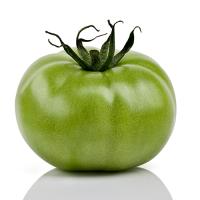 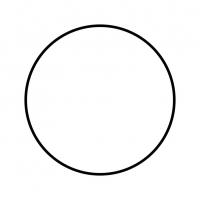   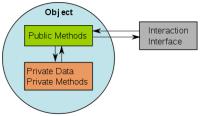 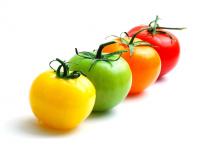         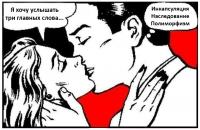 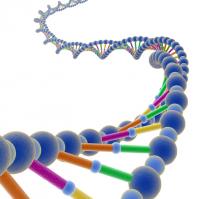 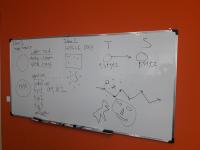 
|
|
| Descendants | Fans | Atheists |
|
|
|
|
| 0 | 0 | 0 |
| Go to the AI section of this object |
|
|
| Found 0 similarities |
|
Confirm that you are a human
|
|
| Expand | IMAGE SEARCH AI | Close | ||
|
|
||||
| Close | |||
|
|
|||
|
0 from 200 |
|
|
Last modified date:
|
|
| Cancel | |
| Cancel | |